Ever since reading Jane Grigson’s Good Things in 1975 I have been fascinated with making my own Ratafias and Fruit Liqueurs.
Over the years I have had a certain mixed success but all have been drunk to the end, even those which my nearest and dearest have described as being like Cough Syrup.
Without doubt the most popular was the Sloe Gin, which I have taken to making with other spirits other than Gin with no lack of quality.
This was my house liqueur in Dwyers Restaurant and I used to make up, and sell, several gallons a year.
A kindly Kilkenny farmers wife used to pick kilos of sloes for me every autumn which I would buy from her, freeze, and make up into the liqueur gradually over the year. (the secret of making it successfully is to wait for the first frost to soften the skins, or, freeze the fruit before making it)
When the restaurant closed I was left with about 6 kilos of sloes in the freezer and, as there was no way I was going to discard such treasures, I brought them, still frozen, to France with me.
About six months ago I macerated the first three kilos in alcohol and today, being an otherwise free day, I thought it would be a good moment to proceed with the bottling.
As well as the Sloes I had, on the top of my kitchen cupboard macerating gently in alcohol three other fruits put there last summer, that is the summer of ’09 and now also ready for bottling.
My method of making these liqueurs doesn’t vary much.
I strain then off their fruit, sweeten or flavour to taste, and then seal in bottles until called upon to offer a sample.
Because I like to offer my guests a digistif after their dinner we do seem to go through quite a lot.
But back to the manufacture.
I have found over the years that despite precise instructions of amounts of sugar to be added during the maceration stage that it is much better to sweeten after this stage, to taste, just before bottling.
With four mixtures to taste, adjust, and then taste again, and again, this turned out to be quite a fun occupation, almost merrymaking, for a cloudy day.
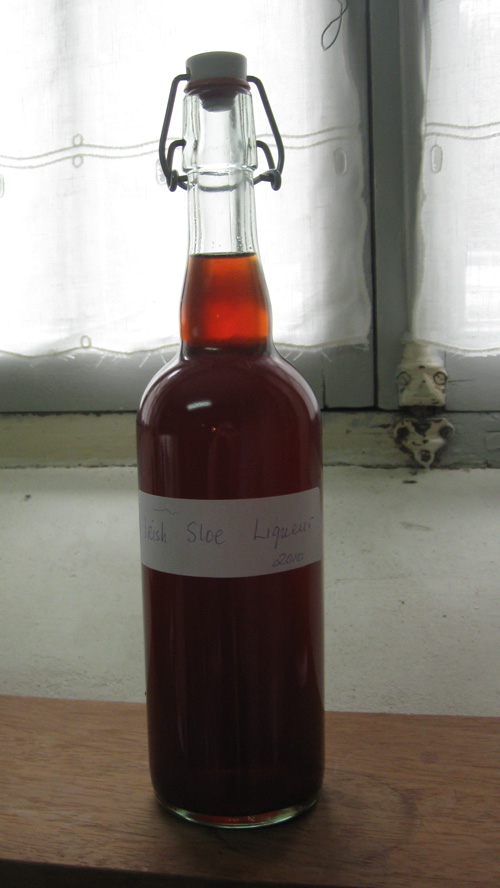
My Sloe Liqueur was the least troublesome.
A little sugar syrup and it was ready to be bottled, all four litres of it.
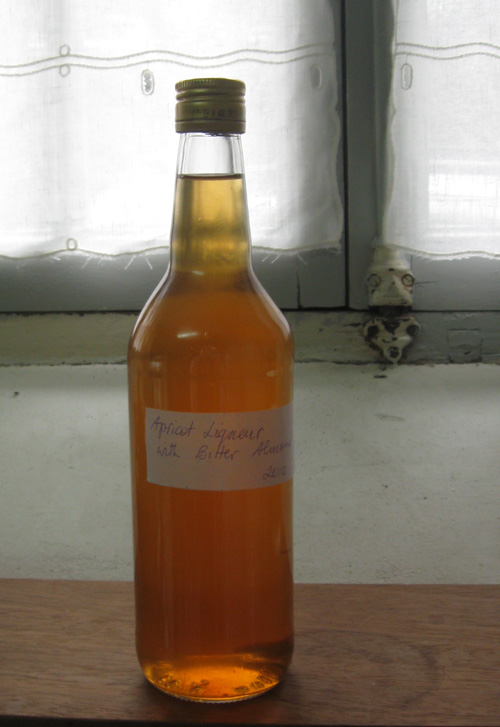
The Apricot was a bit of a disappointment, it needed a lot of sweetning to bring out the flavour but then I had to add a bitter almond to each bottle to make sure it didnt taste too bland.
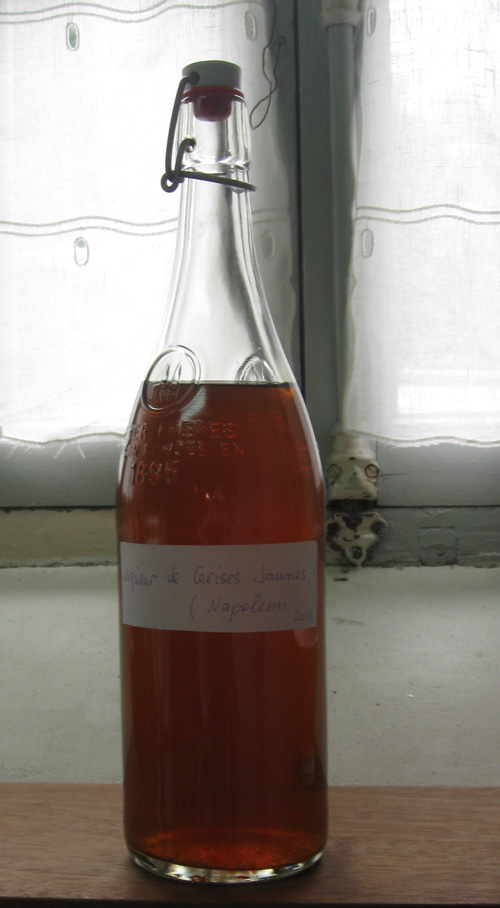
The Napoleon Cherry I have already tasted and it is excellent, a little extra sweetness to bolster it’s already high sugar level and it is ready for consumption.
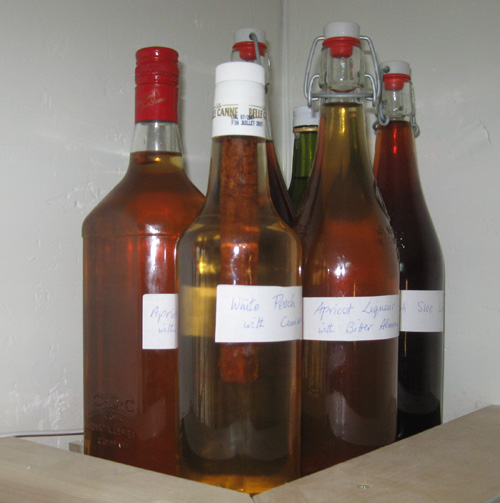
The White Peach, my very favourite fruit, was the bigest disappointment at first sip.
There was the faintest flavour of its delicious floral essence which some lemon juice and lots of sugar helped to come through but I still felt it needed some help and a cinnamon stick in each bottle seemed like a good idea at the time.
At this stage with the best part of a dozen litres of Liqueur on the shelves there was a feeling, expressed by the female half of the business, that I wouldn’t need any more for another ten years or so.
Fear not.
I have a little nest egg or three down against the future.
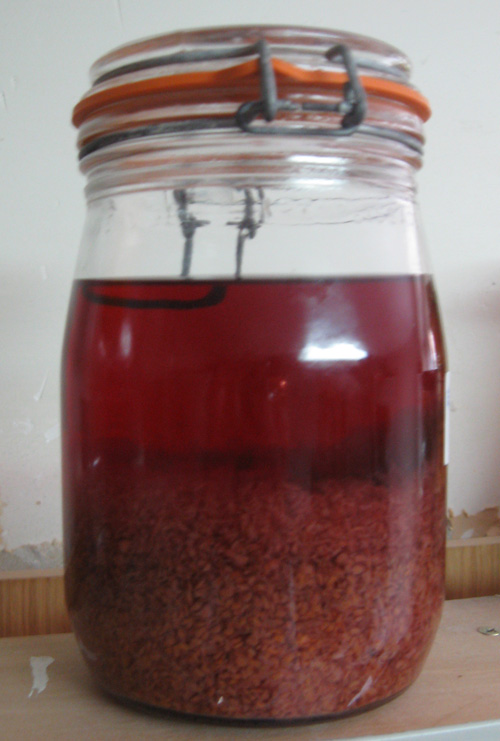
A jar of my trail blazing Raspberry Pip Liqueur
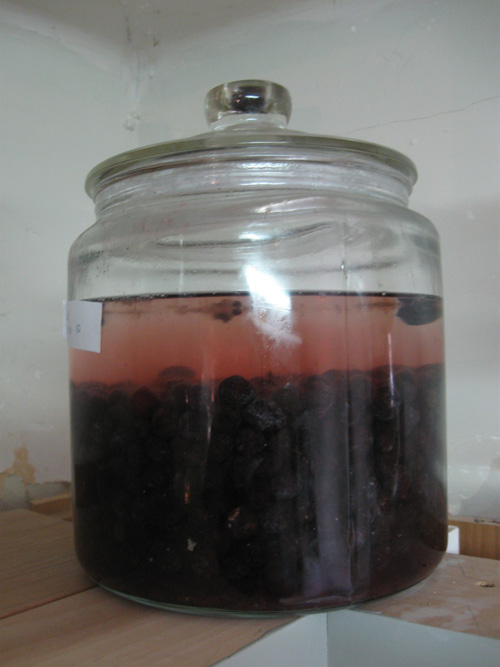
Two litres odd made with the last of the Irish Sloes
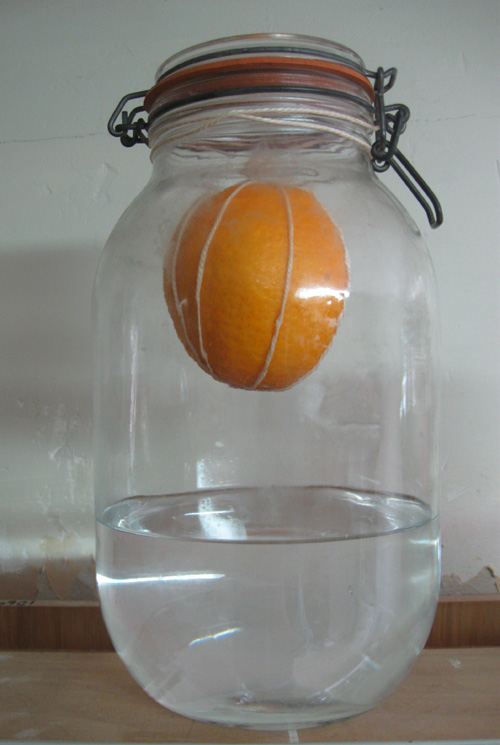
And a litre of my Orange Liqueur.
Believe it or not at the end of six months the orange will be a pale anaemic version of its former self and the spirits below will have a warm orange tinge.
I am told this is the way the Cointreau family make their famous liqueur.
All this on the cusp of November when I forswear the demon drink for a month.
I don’t know at all at all.

Comments
Kevin J
on November 2, 2010it’s wet, dark and cold here and you tease us with all these assorted bottles of warmth and sunshine!
– I dunno at all at all.
Petra
on November 3, 2010Just started what Donal wanted to believe was a Fraughan gin. It’s sloe. Jippeeehh! We might get a taste around Christmas…
The comments are closed.